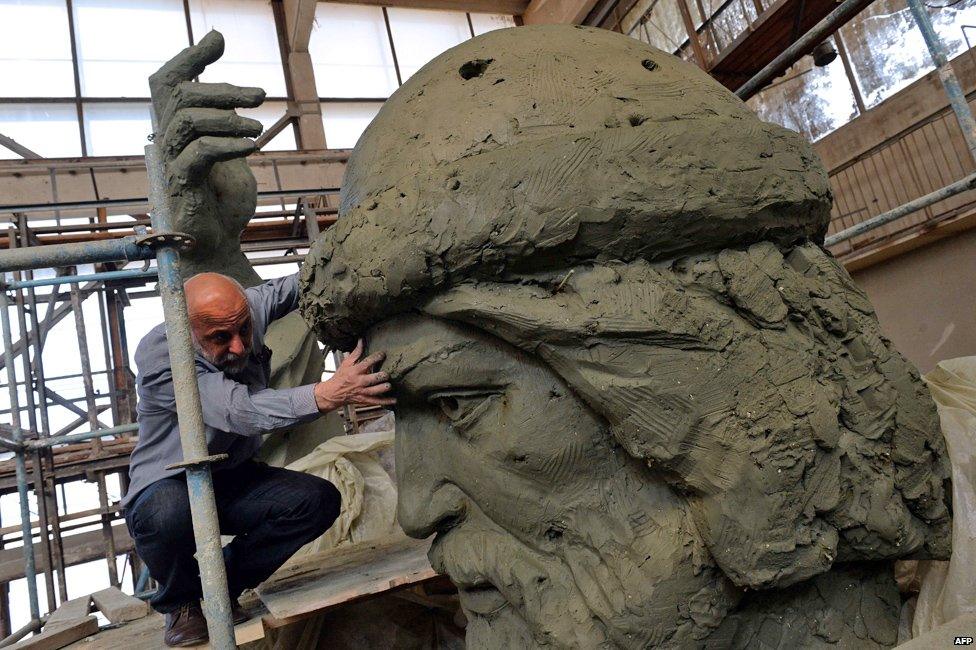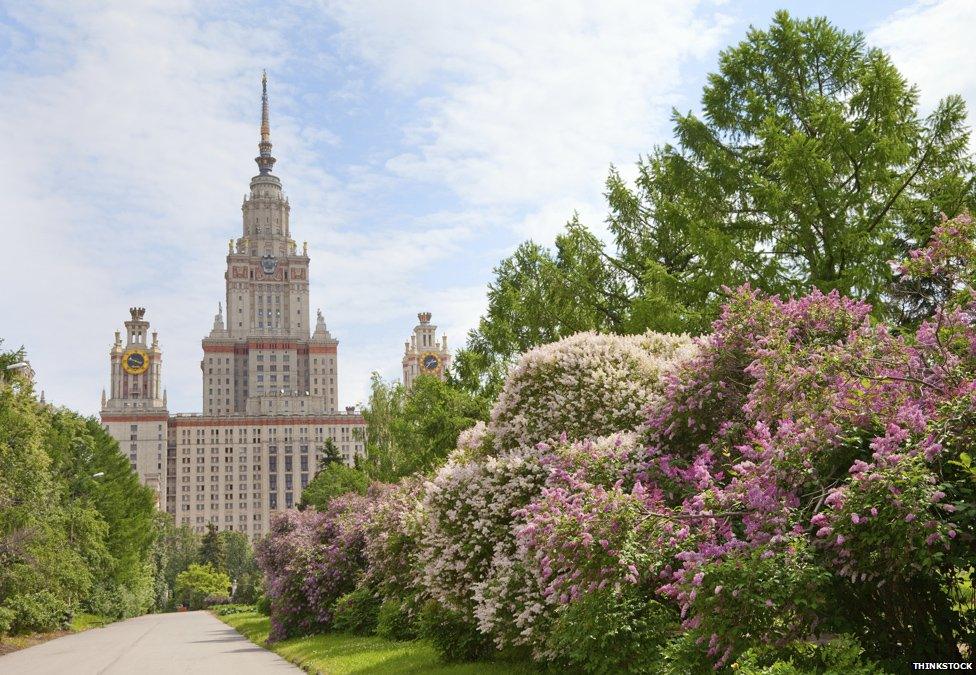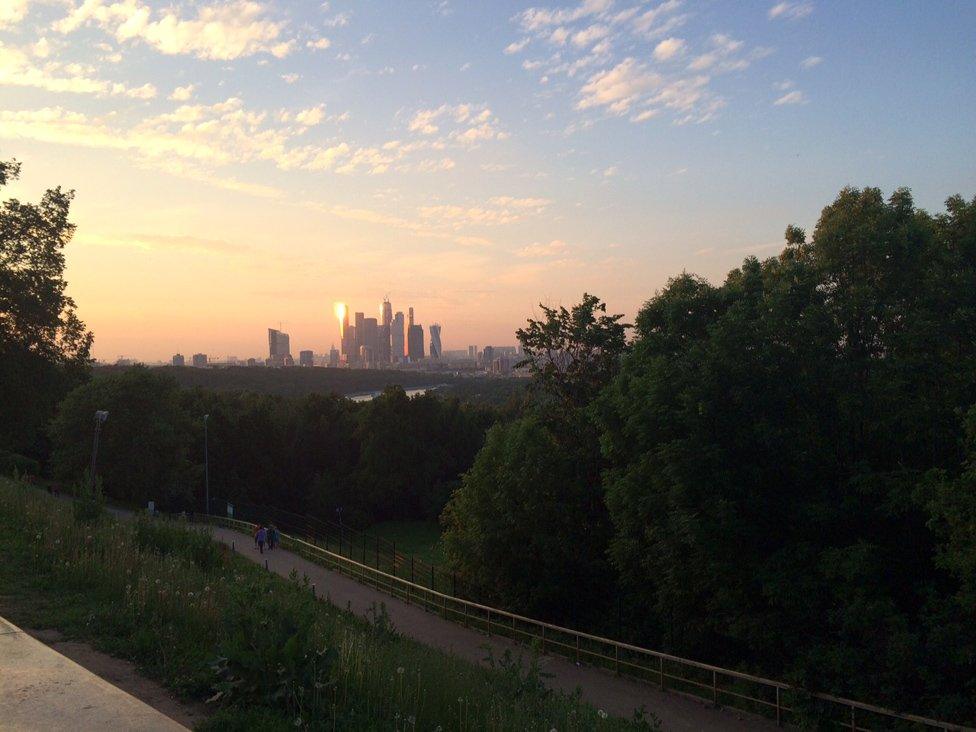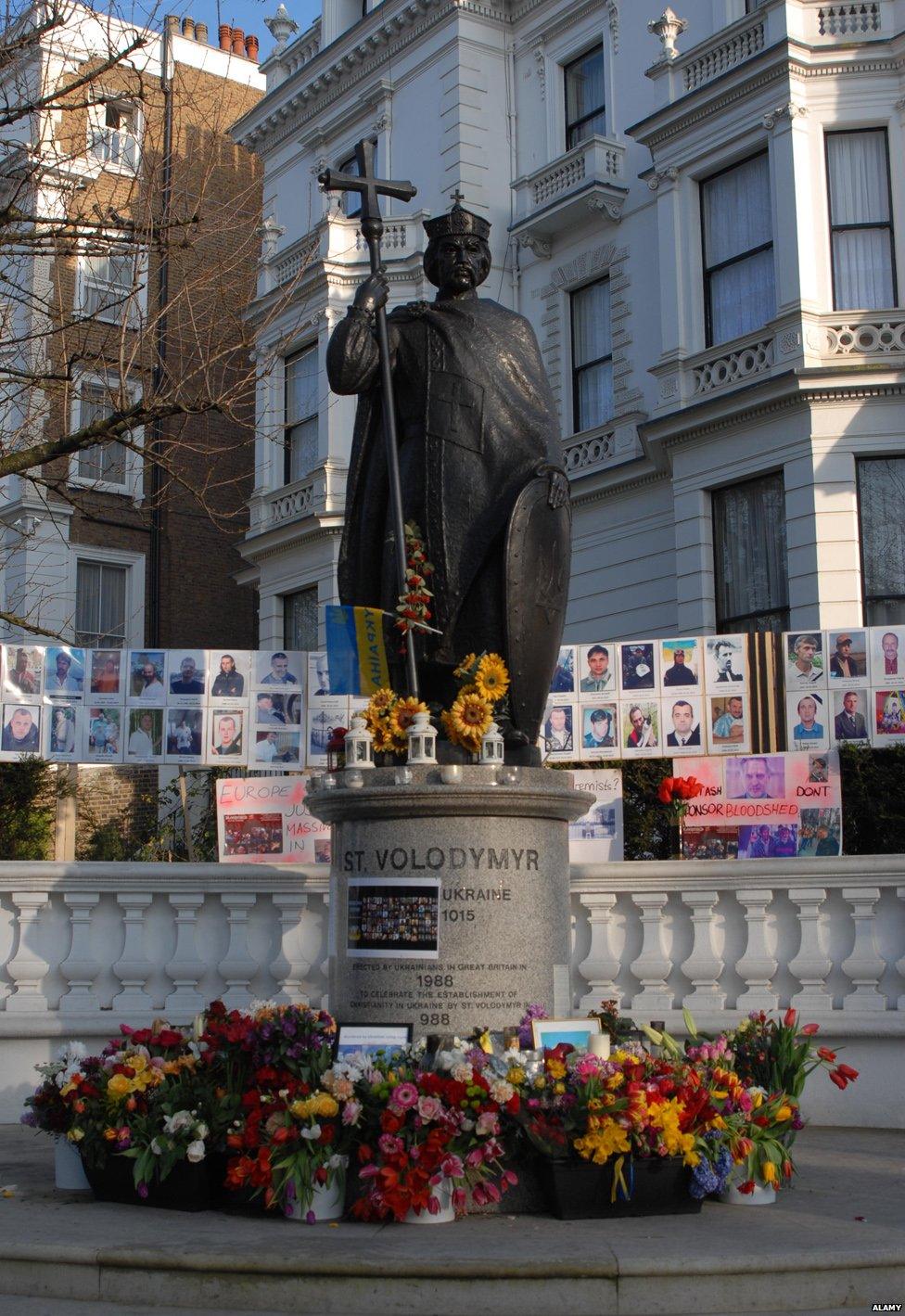The monument to a Russian warlord called Vladimir
- Published

Plans to build an enormous statue of Russia's patron saint in Moscow are causing alarm - but it's not easy to protest against St Vladimir.
The sun is just starting to set over Moscow State University when I meet the best-dressed Communist I've ever seen. She's in a pale grey pinstriped suit, with the natural poise of a ballet dancer, her long brown hair, greying at the temples, tied back in a neat bun. Her name is Yelena Shuvalova, and she's a member of Moscow city parliament.
She's surrounded by a small but earnest crowd of students and professors. They want to know how to protest against St Vladimir - or rather, an enormous statue of St Vladimir, which will dominate the city skyline, not far from this temple of science and learning. Russia's patron saint is due to go up later this year, unless they can stop him.
Vladimir the Great or the Grand Prince was a warlord who became the first Russian ruler to convert to Christianity in the late 900s - before insisting that his people did the same. That was the beginning of the Russian Orthodox Church. St Vladimir also happens to be the man who successfully besieged his own brother in Kiev, now the capital of Ukraine, and that country's patron saint as well.

Sculptor Salavat Shcherbakov stands below his model for a statue of Vladimir the Great
This gathering outside the university is emphatically not a demonstration, as the students make clear - because that would require official permission. It's simply a meeting about the possibility of protest.
So what exactly is it that Shuvalova has against Russia's patron saint? She looks at me with shrewd blue eyes and a half-smile.
For a start, he'll be more than 25m tall. And he will stand on a hill overlooking the whole of Moscow - obscuring a fine view of the city, and in turn, the city's view of the state university itself.
The building is breathtaking - one of Stalin's seven gothic skyscrapers built in the 1950s using slave labour, designed to show the world the might of Soviet man, able to create a building so tall that it pierced the very heavens. The communists had already banished God by then.

"So, no objections on the grounds of religion or politics then?" I ask, thinking back to the 1930s, when Stalin had the city's most imposing Orthodox cathedral blown up. That cathedral has risen again, rebuilt on the same site, its burnished domes a symbol of a Russian Orthodox Church once again enjoying a close relationship with the Russian state. Some would say too close.
"Oh no, no religious objections," says Shuvalova. Purely architectural. It's the right statue in the wrong place. And, Shuvalova's young assistant adds, the geologists say St Vladimir would make the whole area on the crest of the hill very unstable.
"In fact," she tells me, "if St Vladimir topples, he could take the whole university with him, and hurt a lot of people."
I don't quite understand. So I walk away from the university until the enormous Soviet star at the top is just a tiny silhouette against the golden evening sky. I turn to my friend Svetlana as we look at where the statue will stand on Sparrow Hills, and then across the city skyline, where the gold and silver onion domes of the churches jostle with the new skyscrapers, the temples to mammon built by today's Russian rich.

"The students and Shuvalova say they have no political or religious objections to the statue - are you sure that's right?" I ask her. Svetlana looks at me as though I were a particularly dim child. "There are some things you just can't say," she tells me with a smile.
And these days, it's true, Russians hesitate to criticise the Church too loudly - not least with new anti-blasphemy laws allowing harsh punishment for those "offending religious feeling". Even the opposition Communist Party is rehabilitating God and the Orthodox Church as it seeks voters; Christianity is well and truly back as part of Russia's new national identity.
And today, Russia's patron saint has become a rather useful figure for staking a wider political claim: the Kremlin's present-day goals in Crimea and Ukraine.
A few months ago, President Vladimir Putin spoke of Crimea almost as Russian holy ground, with the peninsula he annexed from Ukraine last year now portrayed as the spiritual source of the new Russian state - with Crimea the place where St Vladimir was baptised before converting his people, although Kiev still prefers to think of St Vladimir, and the Crimea, as its own.

A statue of St Volodymyr outside the Ukrainian Institute in London
I think of another conversation I'd had about the statue with my friend Alexei the day before. He was firmly against it.
"I'm an atheist," he told me. "I believe in science. Not superstition or saints. In the old days under the Communists, we weren't allowed to believe in God. Religion was forbidden. These days, it's compulsory."
Perhaps the authorities will heed the quiet voices of protest, and the pleas for a smaller St Vladimir, and a more stable vantage point. But if the Orthodox Church and a popular president who also happens to go by the name Vladimir Vladimirovich have their way, nothing will obstruct the statue itself or a year of commemorations to mark the 1,000th anniversary of St Vladimir's death.
How to listen to From Our Own Correspondent, external:
BBC Radio 4: Thursdays at 11:00 BST and Saturdays at 11:30. Listen online or download the podcast.
BBC World Service: At weekends - see World Service programme schedule or listen online.
Subscribe to the BBC News Magazine's email newsletter, external to get articles sent to your inbox.